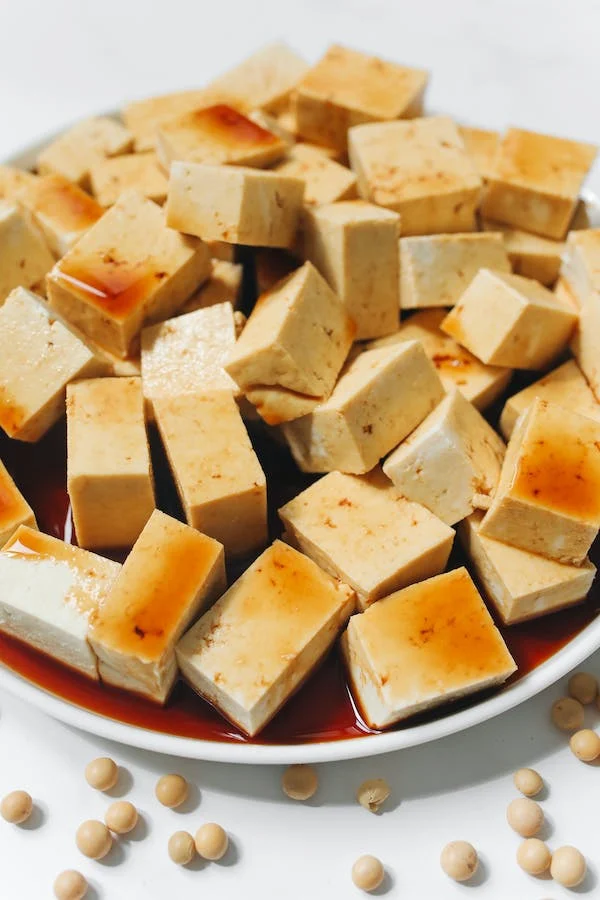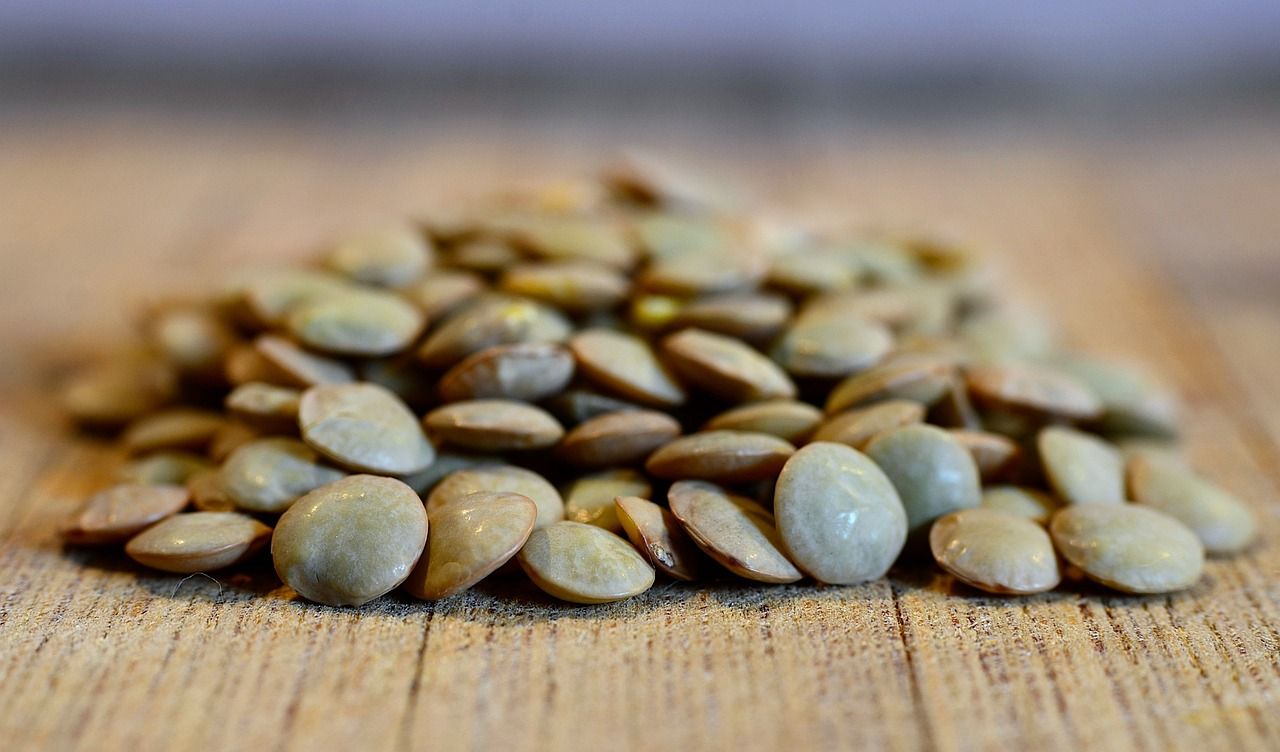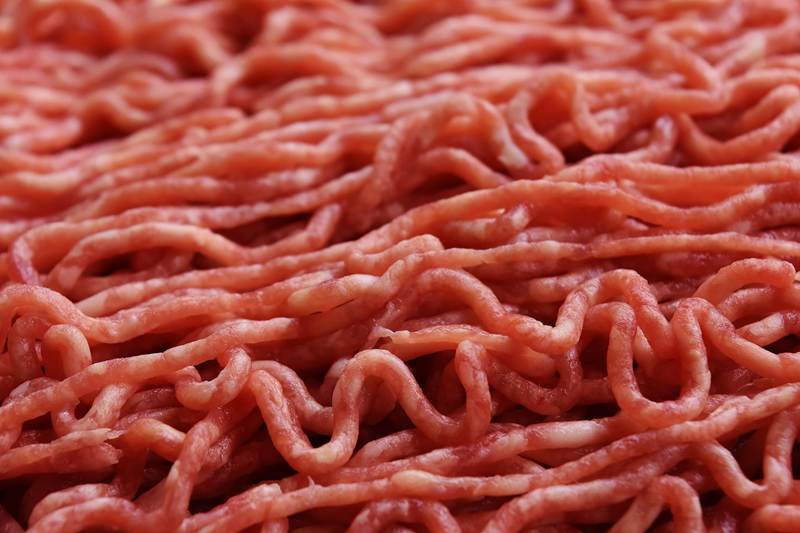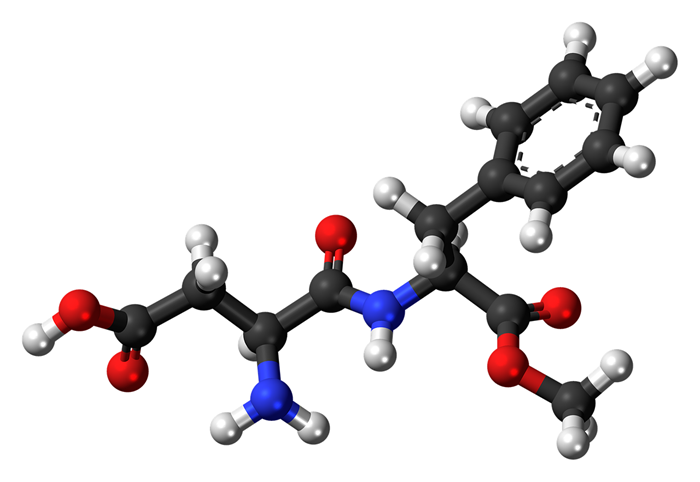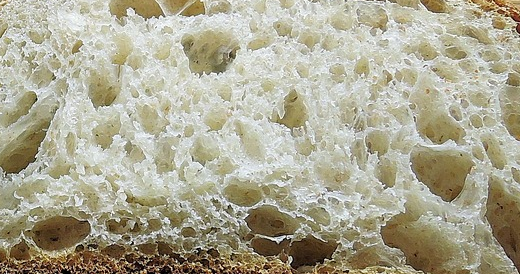Soybean fermented foods are a good source of proteins and nutrients
Buddhism expansion (first century of our era) from India to China, Japan and other Asian countries, seems to coincide with the development of many plants based fermented foods. These types of food are part of the Asian and worldwide gastronomy today. .
The influence of Buddhism in traditional Japan led to various restrictions on the consumption of animal products other than fish. For this reason, people had to obtain vital proteins through the skillful use of soybean. (K Kiuchi – Food Culture, 2001 – kikkoman.co.jp).
Off course, religious influence is not the only reason for soybean fermented food development. Commercial exchanges between China and other Asian countries may have impacted a lot. For instance, Tempeh, in Indonesia, comes from a local coconut powder fermented product that has been adapted to soybean through commerce with China about 1000 A.D.
Soybean based products were often an evolution of fermentation processes used to preserve food base on other type of raw materials including animal sources (fish, shellfish).
Amongst well known products, let’s mention Soy sauce, Sufu (fermented Tofu), Miso, Natto and Tempeh.
A good review has been made on the French website “guide des aliments”: Aliments fermentés à base de soja. An English speaking article is also very rich: Fermented Soy Products: A guide to 12 traditional foods. December 2020, Michael Joseph on Nutrition Advance website.
Some of these products, particularly Tempeh and Natto, are very nutritious and protein dense and are associated with benefits linked to their nutritional composition.
Soy sauce :
Soya beans are boiled and crushed before being mixed with cereals. A first solid fermentation step sis conducted with molds for 5 days. The result of this fermentation is then incorporated into a brine and stay fermenting during 10 months. This liquid maturation step is operated by yeasts and lactic acid bacteria. At the end of fermentation, the juice is pressed to extract soy sauce. Soy sauce is rich in amino acids and, contains about 7% proteins.
Soy sauce is mainly consumed as a seasoning.
Sufu (fermented tofu) :
Tofu is a soybean “cheese” obtained by soy protein coagulation through salts. After, fresh tofu can be maturated through molds development during few days before a second maturation in a brine. Then, some processes include addition of rice wine. That’s a way to obtain Sufu which contains 8% proteins. Sufu is mainly used as condiment.
Miso and Natto :
Both miso (soybean paste) and natto (fermented soybeans) are said to have originated in China, but once introduced into Japan they inspired the development of a variety of unique local soybean-based products. Now, some 1,000 years later, miso and natto have become firmly established as part of the traditional Japanese diet.
Miso:
Miso paste’s process include 2 fermentations. First cereals (rice, barley, rye) are inoculated with molds from the Aspergillus genus and lactic acid bacteria to obtain, Koji after fermentation. This Koji is then mixed with cooked soya beans to enter in a second fermentation with yeasts and lactic acid bacteria.
Miso contains about 10% proteins. Miso is quite variable depending on the ingredient, fermentation time and temperature, the salt level, and other parameters.
In Japan, it’s possible to find “Nutritional Miso” fortified with vitamins and minerals.
Miso is consumed as a condiment or as a dish. The most popular dish is Miso soup. But Miso paste can be mixed with rice or eaten with vegetable pickles.
Natto :
Soya beans are soaked and boiled before inoculation Bacillus Natto spores. Bacillus Natto is a bacteria, close to Bacillus subtilis. This mixture is packed with rice straw and incubated at 40°C for 20 hours. Natto maturation last for few hours at 5°C. Natto is then preserved at 10°C to avoid deterioration.
Natto is highly nutritious. This food is rich in proteins, amino acids, vitamins and is very digestible. Bacillus Natto produces a very dense and viscous polysaccharide providing the specific texture of Natto.
Natto contains between 20 and 30% proteins. It is mainly consumed in main dishes. Natto is mixed with seasoning, egg and Dashi (A broth or dried food such as tuna, seaweed or mushrooms) or soy sauce. This mixture is added to rice. Natto is also consumed in soups.
Tempeh :
Tempeh is a very popular Indonesian food. This product has a compact aspect that can be sliced, deep fried in oil and consume as a main dish. Tempeh is a good meat substitute due to its texture and its good protein content (around 20%).
For Tempeh elaboration, Soya bean are soaked during few hours. At this step, lactic fermentation starts. Bean outer skin is removed and the beans are then boiled for few hours. After cooling, this paste is inoculated with molds from the Rhizopus genus and packed by small portions in banana leaves (or perforated plastic sheets). Incubation take place at room temperature for 48 hours to insure a good mycelium growth without too much sporulation. Tempeh can be consumed as fresh or kept during several months in the fridge or in dehydrated form.
Other Soybean fermented products:
There are many different executions of previously mentioned products and many other soybean fermented food are consumed in Asia. For instance, Doenjang, is a Korean fermented soybean paste with much stronger flavor than Miso. Another spicy Korean product is Gochujang a salty and spicy paste made from fermented soybeans and chili peppers. As a final example, in Taiwan, Stinky Tofu, a fermented tofu with a very strong smell, is steamed or fried.
Soy Sauce
Miso Paste
Natto
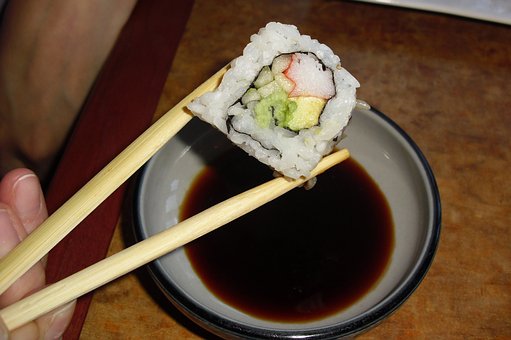
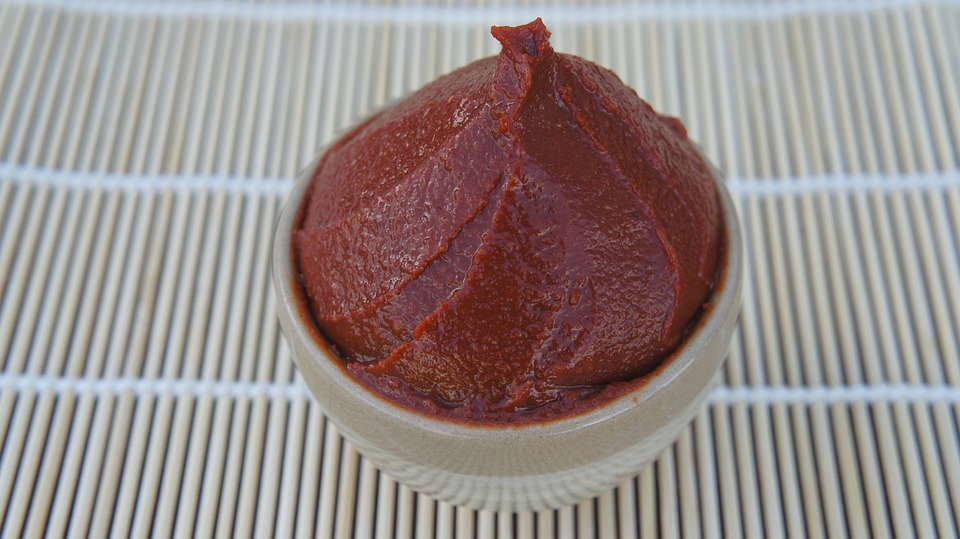
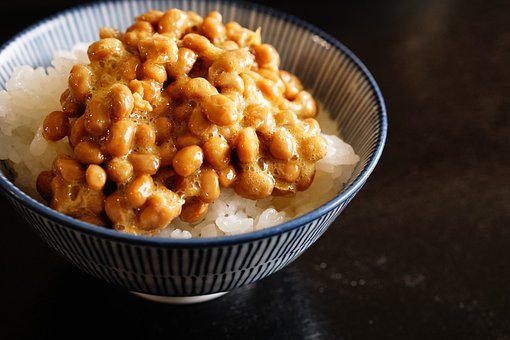
Tofu
Tempeh
